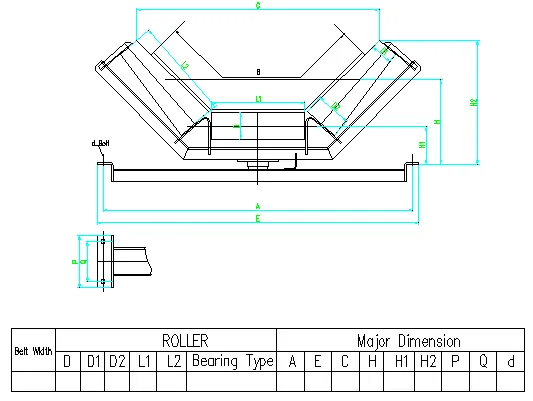 Afrikaans
Afrikaans  Albanian
Albanian  Amharic
Amharic  Arabic
Arabic  Armenian
Armenian  Azerbaijani
Azerbaijani  Basque
Basque  Belarusian
Belarusian  Bengali
Bengali  Bosnian
Bosnian  Bulgarian
Bulgarian  Catalan
Catalan  Cebuano
Cebuano  Corsican
Corsican  Croatian
Croatian  Czech
Czech  Danish
Danish  Dutch
Dutch  English
English  Esperanto
Esperanto  Estonian
Estonian  Finnish
Finnish  French
French  Frisian
Frisian  Galician
Galician  Georgian
Georgian  German
German  Greek
Greek  Gujarati
Gujarati  Haitian Creole
Haitian Creole  hausa
hausa  hawaiian
hawaiian  Hebrew
Hebrew  Hindi
Hindi  Miao
Miao  Hungarian
Hungarian  Icelandic
Icelandic  igbo
igbo  Indonesian
Indonesian  irish
irish  Italian
Italian  Japanese
Japanese  Javanese
Javanese  Kannada
Kannada  kazakh
kazakh  Khmer
Khmer  Rwandese
Rwandese  Korean
Korean  Kurdish
Kurdish  Kyrgyz
Kyrgyz  Lao
Lao  Latin
Latin  Latvian
Latvian  Lithuanian
Lithuanian  Luxembourgish
Luxembourgish  Macedonian
Macedonian  Malgashi
Malgashi  Malay
Malay  Malayalam
Malayalam  Maltese
Maltese  Maori
Maori  Marathi
Marathi  Mongolian
Mongolian  Myanmar
Myanmar  Nepali
Nepali  Norwegian
Norwegian  Norwegian
Norwegian  Occitan
Occitan  Pashto
Pashto  Persian
Persian  Polish
Polish  Portuguese
Portuguese  Punjabi
Punjabi  Romanian
Romanian  Russian
Russian  Samoan
Samoan  Scottish Gaelic
Scottish Gaelic  Serbian
Serbian  Sesotho
Sesotho  Shona
Shona  Sindhi
Sindhi  Sinhala
Sinhala  Slovak
Slovak  Slovenian
Slovenian  Somali
Somali  Spanish
Spanish  Sundanese
Sundanese  Swahili
Swahili  Swedish
Swedish  Tagalog
Tagalog  Tajik
Tajik  Tamil
Tamil  Tatar
Tatar  Telugu
Telugu  Thai
Thai  Turkish
Turkish  Turkmen
Turkmen  Ukrainian
Ukrainian  Urdu
Urdu  Uighur
Uighur  Uzbek
Uzbek  Vietnamese
Vietnamese  Welsh
Welsh  Bantu
Bantu  Yiddish
Yiddish  Yoruba
Yoruba  Zulu
Zulu bend pulley and snub pulley
Understanding Bend and Snub Pulleys Key Components in Mechanical Systems
In mechanical engineering and various industries, pulleys play a vital role in the functioning of systems. Among the different types of pulleys, bend pulleys and snub pulleys are particularly significant due to their unique applications and importance in enhancing the efficiency of mechanical operations. This article delves into the characteristics, functions, and applications of bend pulleys and snub pulleys, highlighting their roles in conveyor systems, lifts, and other machinery.
Bend Pulleys
Bend pulleys are specifically designed to redirect the path of a belt, cable, or rope in a system. They are often used in applications where a change in direction is necessary. The primary function of a bend pulley is to maintain tension on the belt and to ensure that it adheres to the correct track. This is particularly crucial in scenarios where a belt must navigate around corners or obstacles.
The design of a bend pulley typically includes a grooved surface that matches the profile of the belt it interacts with. This groove ensures proper alignment and minimizes slippage during operation. Bend pulleys can be found in various industries, including mining, agriculture, and manufacturing, where they help transport materials over long distances or navigate around equipment and infrastructure.
Snub Pulleys
Snub pulleys, on the other hand, serve a different primary purpose. They are used to increase the tension in a belt by adding an additional contact point. This additional contact facilitates better grip and reduces the likelihood of slippage. Snub pulleys are crucial in systems where the power transmission needs to be enhanced, such as in conveyor belts and drive systems.
The placement of a snub pulley is strategic. Typically, it is positioned in line with the drive pulley and the tensioning mechanism. By creating more contact area, snub pulleys increase the friction between the belt and the pulley, leading to improved performance and efficiency. In many cases, snub pulleys also play a role in adjusting the tension in a belt system, ensuring that the drive operates smoothly without undue wear on the components.
bend pulley and snub pulley

The Differences and Interrelationship
While both bend and snub pulleys are integral to the efficiency of belt systems, their functions and applications differ markedly. Bend pulleys are primarily about redirecting the belt's trajectory, while snub pulleys focus on enhancing tension and grip. These distinct characteristics, however, do not mean that they operate in isolation; rather, they often work in tandem within a single mechanical setup to achieve optimal performance.
For instance, in a conveyor system, bend pulleys can redirect the material-carrying belt around corners, while snub pulleys help maintain the tension necessary to drive the belt forward efficiently. This synergy is essential for achieving the desired velocity, load capacity, and longevity of the belt system.
Applications in Various Industries
Both bend and snub pulleys are utilized across a multitude of industries. In manufacturing, they are crucial for the operation of conveyor belts that transport materials to different stages of production. In the mining industry, bend pulleys often redirect belts that carry ore and waste materials across uneven terrain, while snub pulleys ensure that the heavy loads are transported smoothly without slippage.
Moreover, in automotive applications, these pulleys are essential in timing belts and engine drive systems. Properly configured bend and snub pulleys can significantly influence the efficiency of the system, reducing wear and tear on components and improving overall machinery performance.
Conclusion
In summary, bend and snub pulleys are fundamental components that contribute significantly to the efficiency and effectiveness of mechanical systems. Understanding their roles, characteristics, and interrelationship is essential for engineers and professionals in industries reliant on material transport and power transmission. Proper design and maintenance of these pulleys ensure optimal performance and longevity of mechanical systems, ultimately leading to increased productivity and reduced operational costs. As technology advances and industries evolve, the roles of bend and snub pulleys will undoubtedly adapt, continuing to serve as cornerstones in the engineering landscape.
-
Revolutionizing Conveyor Reliability with Advanced Rubber Lagging PulleysNewsJul.22,2025
-
Powering Precision and Durability with Expert Manufacturers of Conveyor ComponentsNewsJul.22,2025
-
Optimizing Conveyor Systems with Advanced Conveyor AccessoriesNewsJul.22,2025
-
Maximize Conveyor Efficiency with Quality Conveyor Idler PulleysNewsJul.22,2025
-
Future-Proof Your Conveyor System with High-Performance Polyurethane RollerNewsJul.22,2025
-
Driving Efficiency Forward with Quality Idlers and RollersNewsJul.22,2025





























